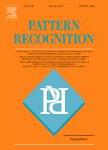版权所有:内蒙古大学图书馆 技术提供:维普资讯• 智图
内蒙古自治区呼和浩特市赛罕区大学西街235号 邮编: 010021

作者机构:School of Computing and Artificial Intelligence Shandong University of Finance and Economics Jinan 250014 Shandong China Shandong Key Laboratory of Lightweight Intelligent Computing and Visualization for Digital Economy Jinan 250014 Shandong China School of Software Shandong University Jinan 250101 Shandong China
出 版 物:《Pattern Recognition》
年 卷 期:2026年第169卷
摘 要:Due to the non-stationary dynamics and complex interrelationships in the stock market, stock investment selection remains a critical and challenging task in the fintech field. We propose a novel stock investment selection framework based on time series subpatterns and multi-relationship fusion. First, we propose a novel stock time-series subpattern representation that effectively captures local temporal patterns, enabling precise characterization of stock-specific features. We further learn the temporal dependencies among subpatterns to reveal implicit pattern changes in each stock’s historical data. Second, unlike traditional methods that learn stock correlation coefficients and fuse them to obtain stock features, we leverage the Transformer Encoder’s capability to capture inherent relationships between data, enabling the extraction of implicit short-term relationship between subpatterns of different stocks and thus directly obtaining features influenced by short-term inter-stock relationship. Third, we fuse the short-term and long-term stock relationships to obtain a fused relationship that influences stock trend changes. This multi-relationship fusion reflects the complex synchronous variation patterns between stocks and facilitates information exchange between long-term and short-term relationships, thereby uncovering the latent connections between these two types of relationships. Finally, we combine the temporal dependencies of stock subpatterns with the fused relationship to predict stock trends. Experimental results on three datasets demonstrate that the proposed method outperforms the state-of-the-art methods.